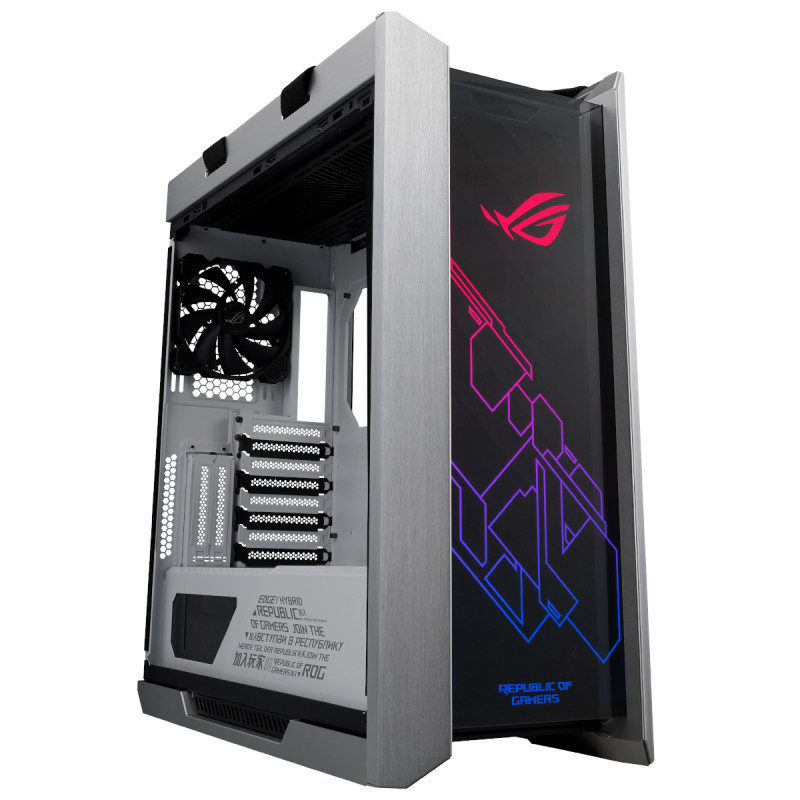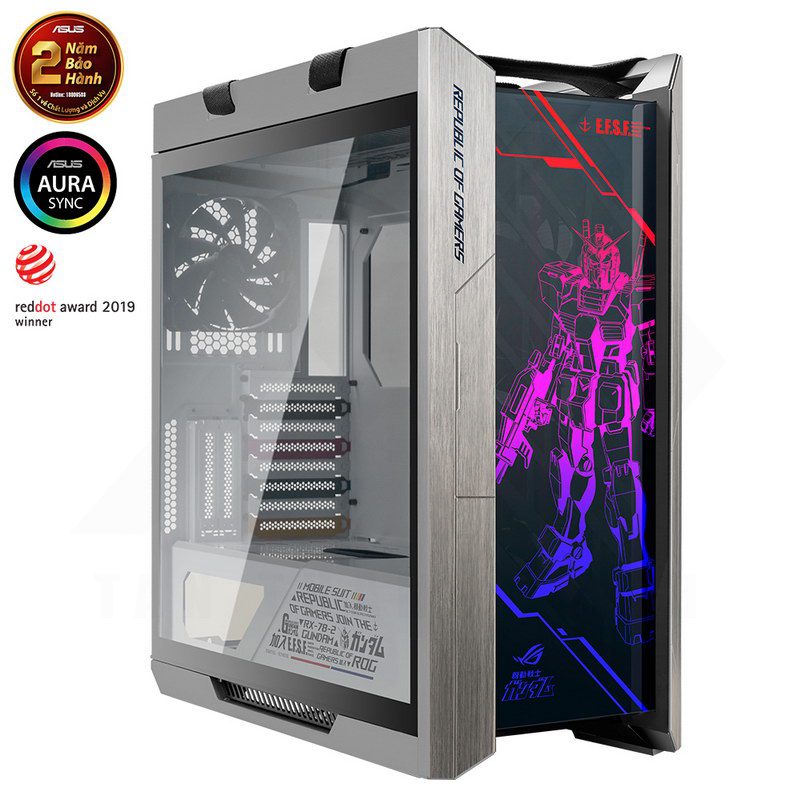
The side panels are both removable with push buttons, which we’ve praised on other cases in the past. Underneath is an HDD cage that can be moved forwards or backwards for extra cable storage space.

The rear section of the shroud has a plastic window for viewing fancy power supplies, i.e. The front section slides back a little to loosen it and then it lifts out, but ASUS missed a trick here by not drilling a couple more holes and allowing users to screw the shroud down with it pushed backwards. Another case feature familiar to us from Cooler Master’s H500 cases is the PSU shroud, which is full-length but can be removed in two sections. A clear plastic cover is worse at both of these things than a metal one. Cable covers are good for hiding cables behind clear glass, and they’re okay for mashing down bundles of cables so that they don’t push the side panel off. That’s a deliberate decision to allow lighting from RGB SSDs to shine through while still obscuring cables, but it removes even more purpose from a component that we already aren’t wild about. The Cooler Master-style rear cable cover is made of translucent plastic. 60mm)ģ.5”/2.5” Drive Bays: Up to 4pcs (Pre-install 2pcs)Ģ.5” Drive Bays: Up to 9pcs (Pre-install 4+1pcs)įront: Slide-Out / Top: Slide-Out / Bottom: Slide-Out Top: 2 x 140mm/ 3 x 120mm (Radiator + Fan Thickness: Max. The cover functions normally otherwise but offers very little clearance for plugs on the edge of the motherboard, and connecting the SATA cable for our boot drive was difficult.įront: 3 x 140mm/ 3 x 120mm (Radiator + Fan Thickness: Max. GPU sag is a problem, but one without an elegant solution. The rails for the supports are unpainted to allow the supports to slide up and down and stand out harshly against the black interior. The braces are of limited usefulness since they mostly support the edge of the GPU closest to the motherboard, which is already held up by the PCIe slot. The cover slides backwards and forwards to allow room for E-ATX motherboards, and it contains a 2.5” drive mount and built-in GPU braces. There was also a mysterious loose screw wedged into it, which we later discovered was from the front panel. When we first received our sample, the “multifunction cover” over the cutouts to the side of the motherboard was knocked sideways in a way that looked like serious damage, but it was just loose. The strap is fastened with velcro and can easily be removed before it gets dusty and gross, and we’d recommend doing so, since the case looks perfectly normal without it. At least the straps and the rails that they’re looped through are massive overkill, tested up to 50kg according to ASUS, so the most likely point of failure is the person lugging it around. Most of the case’s surface is glass and it weighs 18kg empty. It helps a little for hoisting the case up on to a table, but this is not the enclosure to bring to a LAN party, even for the rare person that attends more than one per decade.

The most distinctive is the velcro strap laced over the top panel, ostensibly an “ergonomic and stylish” handle for carrying the system to LAN parties. The ROG line has a reputation for solid hardware despite the over-the-top gamer branding, so it has big shoes to fill.The case is packed with as many features as possible, necessary or otherwise. The Helios has to stand up to extra scrutiny as part of ASUS’ first foray into the case market. They worked with In Win to create the concept shown off at Computex, but the ASUS x In Win branding has disappeared from the production version and it’s our understanding that In Win is not involved in manufacturing. ASUS doesn’t make cases-the company’s been around for 30 years, so we won’t say it’s never happened, but it’s definitely a rare occurrence.

We saw the yet-unnamed ASUS ROG Strix Helios at Computex 2018, where it landed a spot on our Most Room For Improvement list alongside the other two cases ASUS showed.


 0 kommentar(er)
0 kommentar(er)
